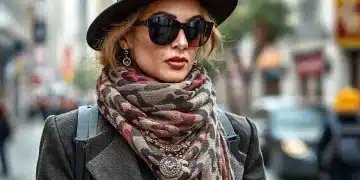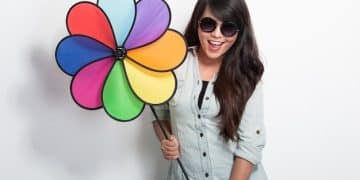Wardrobe color coordination tips to elevate your style

Dressing for different occasions involves selecting outfits that match the event, such as casual attire for relaxed settings, business casual for work environments, and formal wear for special events, ensuring appropriateness and style.
Wardrobe color coordination tips can make a massive difference in how you feel and present yourself. Have you ever wondered why some outfits catch the eye while others don’t? Let’s dive into how the right colors can elevate your style.
Understanding the color wheel
The color wheel is a fundamental tool in understanding color coordination. It illustrates the relationships between different colors and helps you discover which hues complement each other. By grasping the principles of the color wheel, you can create stunning outfits that express your personality.
Primary Colors
The three primary colors are red, blue, and yellow. These colors are the base from which all other colors are created. Knowing these basics is essential for anyone looking to enhance their wardrobe.
Secondary Colors
When you mix primary colors, you get secondary colors: green, orange, and purple. Each secondary color blends two primary colors seamlessly, creating fresh options for your wardrobe. For example, if you have a lot of blue, consider adding pieces that incorporate green.
Tertiary Colors
Tertiary colors result from mixing primary and secondary colors. These include shades like red-orange and blue-green. Incorporating tertiary colors into your outfits adds depth and variety.
Color Harmony
Understanding color harmony is vital for achieving a cohesive look. Here are a few key concepts:
- Complementary colors: Colors directly opposite each other on the color wheel, like red and green.
- Analogous colors: Colors that sit next to each other, such as blue, blue-green, and green.
- Triadic colors: Three colors evenly spaced around the wheel, creating a vibrant look.
- Monochromatic colors: Different shades and tints of the same color, offering a subtle yet sophisticated vibe.
By mixing and matching these principles, you can create a wardrobe that’s both visually appealing and uniquely yours. Remember, the key lies in experimenting with different colors and seeing what resonates with your personal style. The color wheel isn’t just a tool; it’s a guide to unlocking your creativity!
Choosing a color palette for your wardrobe
Choosing a color palette for your wardrobe can transform your style. A well-curated palette not only simplifies dressing but also ensures your outfits are cohesive. Let’s explore how to pick the perfect colors for your style.
Assessing Your Skin Tone
Your skin tone plays a crucial role in selecting colors that enhance your natural beauty. There are two main categories: warm and cool tones. If you have warm tones, colors like orange, gold, and earthy shades suit you best. In contrast, cool tones are complemented by blues, greens, and jewel tones like emerald and sapphire.
Identify Your Style
Knowing your personal style is essential when choosing a color palette. Are you drawn to casual, bohemian, or corporate looks? Identifying your preference helps focus your color choices. For a classic style, stick with neutral shades like black, white, and gray, while a bohemian look might incorporate earthy tones and vibrant colors.
Mixing Colors Effectively
Once you have your base colors, consider how to mix them effectively. Here are some tips for successful combinations:
- Two-color combinations: Pair a dominant color with a complementary hue for visual balance.
- Three-color schemes: Select a dominant color and two accent colors for a more dynamic look.
- Consider prints: If you have a patterned piece, ensure its colors echo those in your palette.
- Test combinations: Before committing, lay out outfits to see how colors work together.
Don’t forget to incorporate neutrals into your palette. They serve as a foundation and allow bold colors to stand out. Shades like beige, gray, and navy can easily be mixed with brighter colors for added versatility. Keep in mind your lifestyle as you build your palette; ensure it aligns with your daily activities and occasions.
Lastly, don’t shy away from experimenting with different shades and hues. Sometimes the most innovative combinations arise from unexpected pairings. Embrace the endless possibilities that come with choosing a thoughtful color palette for your wardrobe and let your style shine.
Combining patterns and textures

Combining patterns and textures in your wardrobe can elevate your style and make your outfits more eye-catching. It’s about finding balance and ensuring that your ensemble feels cohesive and stylish. With the right approach, you can mix different elements while maintaining a polished look.
The Basics of Mixing Patterns
When mixing patterns, start by considering the scale of each design. Generally, combining a large pattern with a smaller one works well. For instance, you can pair a big floral dress with a small striped scarf. This approach creates contrast without overwhelming the eye. You can also think about colors; sticking to a similar color palette can unify different patterns, making the combination feel intentional.
Types of Patterns to Mix
Here are some patterns that you can consider mixing:
- Stripes: Stripes are versatile and can pair well with almost any pattern. Try combining them with florals or polka dots.
- Plaids: A classic choice, plaids can add sophistication. They often blend well with solid colors or smaller patterns.
- Florals: Floral patterns can add life to an outfit. Pair them with subtle stripes or muted prints for balance.
- Geometric shapes: Geometric patterns can provide a modern touch. Mix them with organic patterns, like florals for a dynamic look.
Textures play an equally important role in your wardrobe. Mixing different textures can add depth and interest to your outfit. Combining smooth, rough, shiny, and matte can be visually appealing. For example, pairing a soft cotton shirt with a structured leather jacket or a chunky knit sweater can create an engaging look.
To achieve the best results, consider the overall vibe you want to convey. If you’re going for a casual look, mixing denim with softer fabrics might work well. For a more formal outfit, combining silk with textures like lace can elevate your style. Remember, practice makes perfect; don’t hesitate to experiment with different combinations until you find what feels right.
Accessorizing with color
Accessorizing with color can bring your outfits to life, adding flair and personality. Accessories like scarves, belts, bags, and jewelry allow you to experiment with different hues without a complete wardrobe overhaul. Understanding how to effectively incorporate color into your accessories can elevate your style instantly.
Understanding the Basics of Color in Accessories
Start with the colors in your wardrobe. If you have a neutral base, vibrant accessories can add a pop of color. This approach allows you to stay within your comfort zone while still making a statement. For example, a little black dress can be transformed with a bright red handbag.
Choosing Complementary Colors
When selecting accessories, consider choosing colors that complement your outfit. Here are some tips:
- Use the color wheel: Colors opposite each other on the wheel, known as complementary colors, work well together. For instance, pair blue accessories with an orange dress.
- Analogous colors: Choose colors next to each other on the color wheel for a harmonious look. If you wear green, adding accessories in blue or yellow can enhance the outfit.
- Monochromatic scheme: Stick to one color family by using varying shades and tints. A light blue scarf can complement a darker blue outfit beautifully.
Accessorizing also requires thinking about texture. Mixing materials like leather, silk, and metal can create depth. A woven bag can add a casual vibe, while a metallic necklace might bring elegance to a simple outfit.
Don’t forget about practicality. Consider how a pop of color can brighten your day or improve your mood. A colorful pair of shoes can turn a basic outfit into something fun and stylish. Experimenting with different accessories is an excellent way to find your signature look while enjoying the versatility of color.
Dressing for different occasions
Dressing for different occasions is crucial to ensuring you look appropriate and feel confident. Understanding the context of each event helps in selecting the right outfits. From casual outings to formal gatherings, knowing what to wear can make all the difference.
Casual Events
For casual outings, comfort is key. Think about breathable fabrics and relaxed fits. A good option is to combine jeans with a stylish t-shirt and sneakers. You can add a light jacket for cooler weather. Accessories should be minimal, perhaps a simple backpack or a crossbody bag to keep it laid-back.
Business Casual
In a business-casual setting, aim for a polished yet relaxed appearance. A classic choice would be tailored trousers paired with a button-up shirt. Incorporating a blazer can elevate the look further. Choose accessories that match; a leather bag and minimal jewelry can enhance your outfit without overwhelming it.
Formal Events
For formal occasions, opt for elegant attire. Women might choose a cocktail dress or a long gown, while men may prefer a suit or tuxedo. Pay attention to your choice of color and fabric. Dark colors tend to look more formal. Don’t forget about appropriate shoes—heels for women and polished dress shoes for men.
Seasonal Considerations
Season also affects your outfit choices. In warmer months, light fabrics like cotton and linen are favorable. In colder seasons, layering is essential; you can combine your base outfit with scarves, coats, and boots. Don’t hesitate to use color to express your personality, even in heavier fabrics.
Remember, accessories can enhance your outfit for any occasion. Use them to express your style while staying within the event’s dress code. Ultimately, dressing for different occasions is about finding the balance between comfort and appropriateness, all while showcasing your unique style.
In conclusion, mastering the art of dressing for different occasions can greatly enhance your personal style while ensuring you feel confident and appropriate. By understanding the significance of color coordination, pattern mixing, and accessorizing, you can create unique outfits tailored for any event. Keep in mind your personal style and comfort while experimenting with various combinations. Remember, fashion is about self-expression, so embrace the journey of discovering what works best for you!
FAQ – Dressing for Different Occasions
What should I wear for a casual outing?
For a casual outing, consider comfortable clothes like jeans and a stylish t-shirt. Sneakers or flats work well for shoes.
How can I dress for a business casual event?
Opt for tailored trousers with a button-up shirt or blouse. Adding a blazer can enhance your look.
What outfit is appropriate for a formal event?
For formal events, choose a cocktail dress or gown for women, and a suit or tuxedo for men, preferably in darker colors.
How does the season affect my outfit choices?
Seasonal weather impacts fabric choice; lightweight fabrics work for summer while layering is key in the winter.





